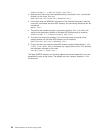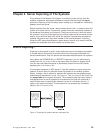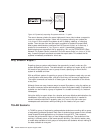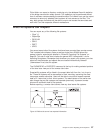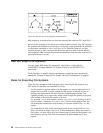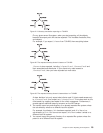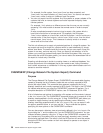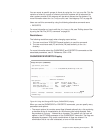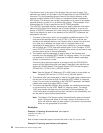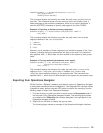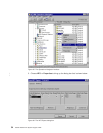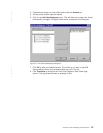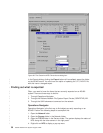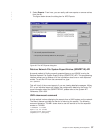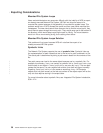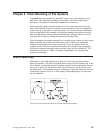v The directory entry is the name of the directory that you want to export. The
pathname you specify will be listed in the DIR parameter on the CHGNFSEXP
command. This entry specifies the path name of the existing directory to be
exported (made available to NFS clients) or unexported (made unavailable to
NFS clients). This directory can not be a sub-directory or a parent of an already
exported directory (unless it is in a different file system). This parameter is not
allowed when the -A flag is specified on the OPTIONS parameter.
v The HOSTOPT parameter has four elements that specify additional information
about the NFS clients that a directory tree is being exported to. If you do not
specify a HOSTOPT parameter for a host name you are exporting the directory
tree to, the defaults for each of the elements of the HOSTOPT parameter are
assumed for that host.
1. The name of the host for which you are specifying additional options. This
host should be specified above in the OPTIONS -O list as a host that has
access to the exported directory tree. Specify either a single host name that
is an alias for an address of a single host or a netgroup name to be
associated with these options. You can assign names to an internet address
with the Work with TCP/IP host table entries option on the Configure TCP/IP
menu (CFGTCP command). Also, a remote name server can be used to map
remote system names to internet addresses.
2. The network data file code page is used for data of the files sent and
received from the specified HOST NAME (or netgroup name). For any hosts
not specified on the HOSTOPT parameter, the default network code page
(binary, no conversion) is used.
If the entry being exported resolves to an object within the QSYS.LIB file
system and the network data file code page is specified, then data files are
opened by OS/400 Network File System Support. NFS will use the open()
API with the O_TEXTDATA and O_CODEPAGE options.
Note: See the
System API Reference,
SC41-4801 book for more details on
the open() API and the O_TEXTDATA and O_CODEPAGE options.
3. The network path name code page is used for the path name components of
the files sent to and received from the specified HOST NAME (or netgroup
name). For any hosts not specified on the HOSTOPT parameter, the default
network path name code page (ASCII) is used.
4. The write mode specifies whether write requests are handled synchronously
or asynchronously for this HOST NAME (or netgroup name). The default
*SYNC value means that data may will be written to disk immediately. The
*ASYNC value does not guarantee that data is written to disk immediately, and
can be used to improve server performance.
Note: The Network File System protocol has traditionally used synchronous
writes. Synchronous writes do not return control of the server to the
client until
after
the data has been written by the server. Asynchronous
writes are not guaranteed to be written.
Examples
Example 1: Exporting all entries from /etc/exports.
CHGNFSEXP OPTIONS('-A')
CHGNFSEXP '-A'
Both of these commands export all entries that exist in the /etc/exports file.
Example 2: Exporting one directory with options.
32 OS/400 Network File System Support V4R4



